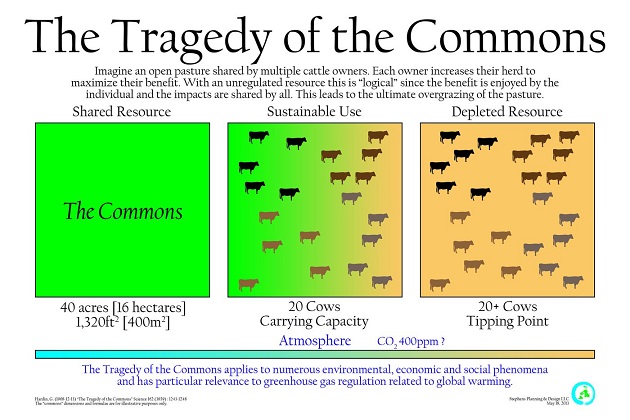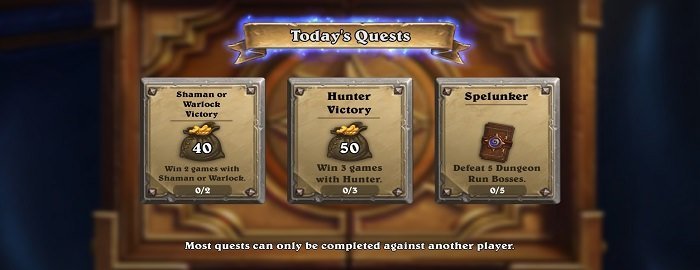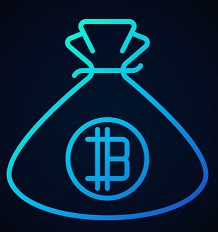
Alright last post I made reference about a "secret mission" regarding heading on over to Philadelphia. I went on a little adventure and met up with @yabapmatt within the King of Prussia suburbs. It's strange to admit, but this is the first time I've actually met someone from Hive even though I've been with this community since late 2017. I guess it's all coming together when you can get the agoraphobic introvert to step out into the sunlight for once.
This meetup is something that we've been talking about doing since August 2021 when I found out I'd be moving to Pennsylvania a month later. So obviously, this has been a long time coming. We set up a couple of different dates that ended up falling through recently, so yesterday I was pretty committed to getting there. Perhaps I was... too committed?
Step 1: Getting there.
At the last second my girlfriend tried to convince me to cancel again for silly reasons. Those silly reasons being small details like severe thunderstorm warnings and flash floods and even a tornado warning. THAT WASN'T HAPPENING DAMMIT! And so I embarked on one of the more treacherous journeys of my day.
Luckily...

I am a pretty amazing driver honestly. Terrible at navigation (god bless GPS and Google knowing where my phone is anywhere on the globe 24/7) but really good at maintaining control of the car when the conditions are poor. I only lost traction one time during the entire trip for a fraction of a second while I was turning right through an onramp at 45 MPH. Pretty good considering the circumstances!
You know that ridiculous maximum windshield wiper setting that no one ever uses because why would you ever need them to move back and forth that quickly? Yeah I had to use that setting a few times. I guess it's not such a stupid option after all! Luckily the roads around these parts are surprisingly well built and maintained, especially for water management.
I ended up hitting a bit of traffic at one point because of an accident (no surprises there) but then once I got to the front of the line it became apparent that the collision wasn't even on my side of the freeway. Don't you just hate that? When all the traffic you were waiting in for however long was caused just by people staring dumbfoundedly at the accident on the other side rather than just driving past it normally? I've always thought it was weird that no one ever tries to fix traffic problems by telling people at the front to stop being idiots and speed up. Seems like a no-brainer. Perhaps one day crypto will find a solution to people being terrible at driving and tokenize the solution. And I will call it the Road Rage network. Until then this is why we can't have nice things.

In any case that accident was really bad. Possible fatality on a bridge involving an upside down SUV and a Mack truck with a front end that looked like it exploded. All lanes were blocked by emergency vehicles. Then right after I got out of traffic my GPS took me on this wild ride through backroads that were almost flooding but not quite there yet. Wasn't too bad except for this one part where the water looked like blood but it was really just reddish mud. Was one of those situations where the flooding creeped all the way into the middle of the road so I safely swerved into the middle because it wasn't very obvious how deep it was on the side of the road. Again, I appreciate a challenge! @yabapmatt apologized several times for the weather but I can't complain. It's all part of the story.
Took me 130 minutes to get there and only 90 minutes to get back (drive back was a breeze, although the transmission has been acting up on long trips when driving uphill). I left at exactly 2:30 and got back at exactly 9:00, so our chat must have lasted almost three hours. You know us crypto folk. We always got something to talk about.
Topics of conversation:
- Splinterlands
- Decentralization
- Sustainable practices for gaming economies
- Modular solutions
- Stable coin peg
- The benefits of centralization (CEO)
- Hive timelocks and account recovery.
- Bitcoin
- Rune
- Various other topics
Splinterlands
Certainly this was the main topic of discussion. Unfortunately I'm a bit out of my element when it comes to Splinterlands because I've only played the tutorial, but it was still good to hear all the developments that have been made in addition to the ones coming down the pike.
Decentralization
Splinterlands is making a big push toward decentralization. The ultimate goal here is to create a second layer of nodes using SPS as the governance token in a truly decentralized system that does not require a corporation to stay in operation. Eventually the stakeholders will take full control of the system.
Sustainable Practices.
The way that Splinterlands works today lured quite a big bot army into the system. The Sybil attack was real. This attack was mitigated with the spellbook costing $10 per account to farm daily quests, but apparently it was still worth it for the bot army to fork over $10 per account and spam games at the bottom ranks for reward.
A good way to stop this is to make sure that it's not financially viable for low ranks to turn a profit. Now that I think about it a bit more, we can frame the 51% attack that crypto networks are vulnerable to in a completely different light. If a bot becomes advanced enough to beat more than 51% of the userbase on average, that would be bad. The goal here would be to make a game that combines skill and luck that results in the bottom 50% of players feeding value into the top 50%.
This is how it works for a game like poker (assuming zero rake). On average 50% of the players are long-term losers and 50% are long term winners. Unfortunately, with a game like Splinterlands that is 1v1 against opponents of a similar rank, a mechanic like this is much harder to achieve.

RIP daily quests?
Splinterlands is opting to eliminate all these attack vectors completely in the future. The goal for the economics going forward will be such that it doesn't matter if bots are playing or not, as it will be not be possible to farm the network via Sybil attack. This may come as a disappointment for those who enjoyed farming the daily quests and whatnot, but future tokenomics of the system will be tailored for recycling value back into the ecosystem and boosting card value rather than allowing bots to dilute the system by farming the low ranks.
Modular code
This is likely the most important topic to consider. It's very important to create systems that can scale and are plug-and-play with other systems (interoperability). When Splinterlands removed several custom-json operations from the main chain to lower the burden of bandwidth, where did they go? To a centralized server.
Now, most people hear 'centralized' and they panic. However, there are many advantages to centralization, especially when they can easily be ported into a decentralized service once its been developed. There is where modularity comes into play.
Many people do not realize this, but there are many ways to employ blockchain technology without actually being on layer-one blockchain. This is why it's called layer two. When Splinterlands JSONs got ported over to a centralized server they didn't just throw caution to the wind and create an entirely new system to accomplish this task. They just stopped posting the JSON to the main chain because doing so wasn't really necessary.
This means the Splinterlands node contains and receives JSONs constantly that are fully secured by Hive encryption and signed by the correct private keys. They simply don't forward that transaction to layer-one, instead opting to store it on their servers alone.
This is a very important distinction when comparing the tech to a different centralized solution that doesn't employ blockchain. If that server gets hacked, data can be changed and there is no proof that what is on file is correct or not. With Splinterlands, even though the data is stored off chain, even if their node gets hacked it's impossible to change the data because every single player is still signing transactions with their private key. This protects that critical data independently of the centralized service. This is a very big distinction in comparison to typical WEB2 solutions.
But again, the ultimate goal being worked toward is putting SPS stakeholders in charge and decentralizing this layer-two system entirely. The only connection from layer-two to layer-one are the accounts and associated public/private keys (a very big deal indeed). Account security and modularity between these servers is a key component to 'splinter-sharding' the network and scaling up.
Multi-sig
In the context of interoperability and branching out to other networks, we also talked about multi-sig solutions and how they are currently vastly underutilized. Essentially by employing multi-sig we can deploy fully decentralized bridges and wrapped tokens to other networks.
Take EVM chains for example.
We can create a solution for wrapped assets that requires validation by the top 20 witnesses or another subset of nodes that exists on a layer-two network. The biggest threat to wrapped tokens is that the bottleneck is controlled by a single entity. @fbslo has already created a solution to this that actually works (confirmed by @yabapmatt) and decentralizes this bottleneck by requiring signatures from multiple nodes. That's a pretty big deal. Modularity and interoperability and key to not only scaling up, but also building and capturing value for all parties concerned.

Stable-coin peg
The DEC stable coin is supposed to be pegged to $1 for stability. 1000 DEC = $1. Capping the token to the upside is easy. Should DEC break the peg to the upside SPS can be burned and used to mint DEC. However, how do we maintain the peg to the downside? After all, that is exactly what crashed the LUNA/UST system to zero just recently.
As @taskmaster4450 can attest, the best way to drive value and demand for a stable coin is to give it actual utility. That means being able to purchase products and services using the stable coin. That is exactly what Splinterlands and DEC are attempting to do.

- All purchases on Splinterlands can be done using DEC or 'credits'.
- Credits are pegged to 1000 = $1
- DEC is pegged to 1000 = $1
- All products can be bought with either DEC or credits.
This is how the DEC is pegged to the downside. Even if massive amounts of DEC are dumped on the market, that dilution will have zero affect on the value of the governance token because DEC can't be used to mint SPS. That's a powerful peg that pumps SPS when the market is doing well and doesn't pose a risk when the market is falling. Very well done.
@yabapmatt even talked about the need to rebrand DEC (Dark Energy Crystals) entirely so that it can be used as a stable coin across multiple brands, products, NFTs, and games. There are potentially very big deals that could go down with reputable game developers. A portion of all that value gets driven to the Hive ecosystem. Exciting times.
https://splinterlands.com/?p=shop&tab=nodes

Validator Licenses
In order to bootstrap the second layer being developed these valadator licenses go on sale soon. I must admit it's a bit weird to apply for a 'license' in a decentralized ecosystem, but I am eager to see how this plays out. Developments are certainly being made.
Breaking the meta.
One of the big reasons I never got into Splinterlands was because I just happened to be going hard on Hearthstone at the time of launch. Also the lack of gameplay and the automated battles really didn't appeal to me. However, I learned that you can't just spam the same deck with the same overpowered cards over and over again, which is pretty cool. The rules of the game actually change on a match by match basis, and certainly there is some strategy involved rather than just paying to have the best cards.
The problem with CCGs is that a meta is developed by the best players and simply copied over and over and over again by the lesser players who refuse to play the game themselves and develop their own strategy. Tweaking the rules on every match is a great way to break the meta and force people to actually think about what they are doing instead of just copying a winning strategy over and over again.
It's worth noting that Ragnarok may also fix this problem by having a very limited pool of cards in addition to the extreme complexity of merging 3 games at once (chess, poker, ccg), on top of charging users HBD to heal after every match (bot killer). At this point Ragnarok and Splinterlands are potentially foils of each other with Splinterlands employing a 'less is more' strategy and Ragnarok going full ham on the complexity and elite gamer side of things. Then again, Ragnarok doesn't exist yet, and Splinterlands does... so there is that! If 'ifs and 'buts' were candy and nuts we'd all have a Merry Christmas.

Bitcoin
Of course we didn't just talk about gaming. More and more Bitcoin is a hot topic theme. Nothing beats Bitcoin in terms of security and a reasonable expectation that the system will not be much different in ten years. The same can not be said about any other network. Buying Bitcoin is the ultimate 'oh-shit' button in crypto, and far too many people in this space ignore it to their own detriment, instead opting to fill their bags with even more volatile and risky assets (as if Bitcoin is not risk-on enough). Hmmmmmm, buy some Bitcoin. Nuff said.
Rune
The topic of Rune was also brought up. Rune is pretty amazing. The things that Rune is doing are simply not being done anywhere else. Like Hive, Rune is also comically oversold and perpetually volatile. Once you have Rune, it is exceedingly easy to trade it into any other asset directly on chain permissionlessly. Other decentralized exchanges simply can't do this and require permission from a centralized wrapping service. This is going to be a big deal when sweeping regulations come down from up high.
However, the real development here are the rumors swirling around a privacy token being implemented on ThorChain. The ramifications of such a massive upgrade can not be overstated. As discussed a while back, cryptocurrencies synergize with each other; they do not compete. If ThorChain implements a privacy token, every other token on ThorChain (connected to RUNE) essentially becomes a privacy coin. That's massive.
I think a lot of people underestimate this potential development because until now all privacy coins have existed in a vacuum and are constantly being delisted from centralized exchanges. This further exacerbates the problem. A privacy coin on a DEX provides more value to the network than dozens of other listings combined. Fungibility is the backbone of currency, and privacy is the backbone of fungibility. If on-chain assets can be blacklisted then the blacklisted coins are worth less than whitelisted ones and the entire value proposition of the network becomes unstable. Privacy fixes this.
Various other topics
Included in this category are things like the Speak network, Ragnarok, Koinos, Polycub, gold/silver, speculation, etc etc etc. Again it was a three hour conversation so I have to paraphrase quite a bit. The topic of precious metals was quite noteworthy, as the blatant manipulation of the market is obvious. How is it that prices of the paper/derivative market for PMs can stay flat while simultaneously being exceedingly difficult/impossible to purchase the physical product during certain years? Something there just doesn't add up.
Conclusion
It was very nice to get out of the house and have a real-life conversation with someone just as excited about blockchain as I am. Even with the market being down the speculation simply doesn't matter. We will continue to grind on. Bear markets are for building. Yada yada yada.
Splinterlands is making moves, and I've always felt a little priced out of the market. Matt was kind enough to gift me 100 chaos packs today, and now I'm sure I'll get hooked on this crack they call Splinterlands. Ah well, now's the perfect time to enter anyway with the price of SPS being down 90% from all time highs and lots of fundamental developments coming into play. Good times. Let's continue the grind.
Posted Using LeoFinance Beta

